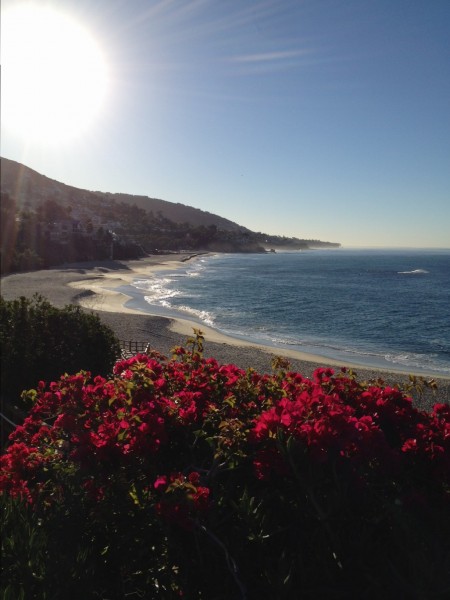
Each and every day, waves move sand back and forth, onto and away from beaches. The thin ribbon of sandy barrier islands and beaches along America’s coastline shifts constantly, especially during hurricanes, nor’easters, and other extreme storms.
How vulnerable is your favorite beach if a hurricane like Katrina, Ike, or Sandy paid a visit? What did your beach look like 50, 100, or 150 years ago? What might it look like in the future? Since more than 40 percent of the nation’s population lives in coastal counties on both the East and West Coasts, answering questions like these will help protect millions of citizens who are at risk from changing sea level, retreating shorelines, and extreme coastal storms.
To help ensure safe and resilient coasts, the U.S. Geological Survey (USGS) has created an online tool that allows anyone to interactively “see” past, present and future hazards. This tool — the USGS Coastal Change Hazards Portal — can aid in decisions that involve emergency preparedness, ecosystem restoration, and where and how to develop coastal areas.
No sophisticated technology is required. The tool runs on web browsers, tablets, and smartphones. It is designed for a wide-range of audiences, from federal and state agencies to non-governmental organizations, public entities, and private citizens.
“Our nation’s coastlines are constantly changing landscapes that pose unique management challenges,” said Suzette Kimball, USGS acting director. “This new USGS portal is truly one-of-a-kind, providing a credible foundation for making decisions to protect resources, reduce risk, and prevent economic losses.”
“Essentially, the portal is an interactive mapping product with layers of information, but don’t let that simple explanation be deceiving,” Kimball continued. “The portal is unique in that it compiles a diverse array of science — science that is unbiased — to provide a comprehensive picture needed to visualize and understand how coasts behave under various conditions.”
How It Works
One key component of the portal is the ability to explore coastal hazard risks at varied scales, from a local area of interest to a national perspective. This location-specific capability is extremely valuable for planning and preparedness and for making decisions to build coastal resilience.
For example, if a hurricane alert is issued, users can input their city and state to see maps and imagery of potential impacts for a similar storm scenario. If an individual is planning to move to a beach, they can type a location into the portal to view what types of coastal hazards and impacts have occurred nearby. The Coastal Vulnerability Index feature shows the relative susceptibility of the nation’s coasts to sea-level rise. Resource managers can also make decisions on how best to protect precious ecosystems. These are just a few ways the portal may be utilized.
Technology Sets Sail — New ‘Mashup’ Capabilities
A range of information is provided through the portal, such as historical data, existing publications, satellite imagery, maps, and more. By looking to the past, scientists have direct evidence of how our diverse shorelines have behaved, allowing for more accurate analyses of future change. The USGS also investigates coastal change during extreme storms to help understand hazards such as severe beach erosion, island overwash, or coastal inundation. The portal will enable users to view USGS science in conjunction with their own personalized data to answer specific questions.
Partnerships are Essential
The information provided through the portal also enables state agencies to improve their ability to monitor and assess their coastlines. “The ability to easily locate and access USGS research and data through the new Coastal Change Hazards Portal is of great value for coastal managers,” said Massachusetts Office of Coastal Zone Management Director Bruce Carlisle. “This information directly supports our work with local cities and towns to assess risk and communicate current and future hazards.”
Get Onboard and Explore
Follow the link below to investigate the coast and learn more about impending hazards: http://marine.usgs.gov/coastalchangehazardsportal




